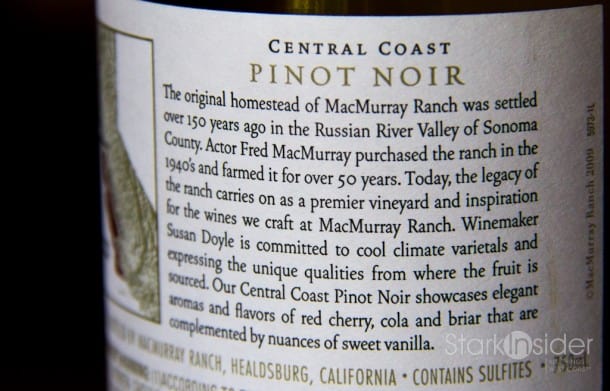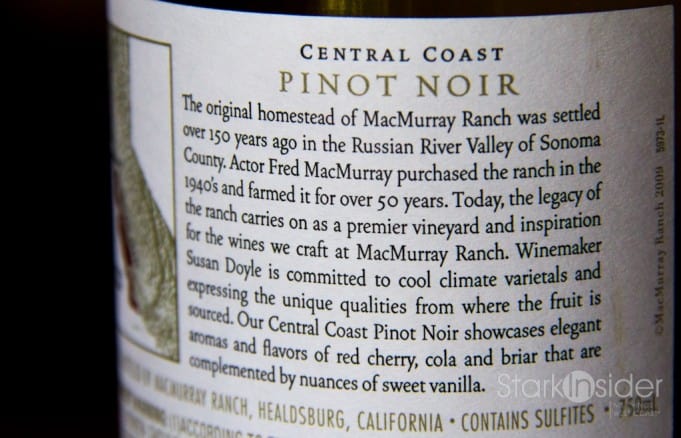
Recently, as we were enjoying some wine and appetizers in the backyard on a relaxing evening with family, my nephew unveiled his great wine conspiracy. It goes something like this: wine tastes like… wine.
We had finished a Chardonnay and just uncorked a Pinot. The wine was an ’09 MacMurray Ranch, and a few of us were playing grand tasters; swirling the wine like it was some sort of acrobatic exhibition, tossing around descriptors and wild adjectives. Toasty! Barnyard! Earthy! Hipster cool! Sheepishly coy! Elegantly, sublimely, sophisticatedly (it’s a word, I think) brave.
My nephew would have none of it, and upped his skepticism.
“Wine tastes like wine!”
We challenged him, and asked if he couldn’t detect any differences between the two open wines sitting on the table.
“Nope. And I don’t believe you can either! I’m not fooled by that!”
(of course this was all accompanied by a devilish grin, knowing very well he was egging all us on)
Hmm, truth be told, I started to wonder. Was this whole wine thing really just a sham? His conviction was so strong. I remember as a kid growing up in Canada my Dad would occasionally give me a sip of beer (Schlitz). I always thought it was a horribly strong taste — unlikable mostly, repugnant and mysterious — that tasted like… beer. And when I got an occasional sip of wine (bubbly duck I’m quite sure) it tasted like… wine.
My nephew also didn’t believe we could ascertain scents or flavors such as grapefruits, pears, or cherries. After all, as he explained, “it’s not as if they put apples into the wine when they’re making it.” Where does it come from then?
So we did what any self-respecting family unit does while sitting around a table, breaking bread. We made a game of it. It was my nephew’s idea actually. He read (with plenty of snickering) the label on the back of the MacMurray Pinot. Okay, he asked us, go ahead and guess the four adjectives used to describe this wine.
I started with my staple: Vanilla!
Yep. 1 out of 4.
That seemed to catch my nephew off guard a little. Wow, you mean, you can actually pick out vanilla?! Some day I might tell him about the great labeling flimflam. One is that if the wine is Pinot, you must by law include “vanilla” somewhere in its description. The other is that if you’re a wine marketer, during the wine labeling brainstorm process you must (a) be half in the bag; (b) be able to giggle at will uncontrollably like a maniac; and (c) be well versed in the Seinfeld and the J Peterman epistemology of story telling.
My Uncle got the next one: Cherry!
2 out of 4.
And so it went. Eventually some one got Cola! and that left us with one last descriptor.
“Yuck, you’d never ever want to eat or taste this one.” His clue was that you’d find it in nature. He was also confident we’d never ever guess this one.
So we drank more wine. Told stories. Shared laughs. As the sun went down we forgot about our silly game.
Later, though, I stubbornly wanted to know. What was that fourth, hideous descriptor used to describe that MacMurray Pinot?
Briar.
Young people. There’s is the wisdom.
The wine was good, the company even better.


